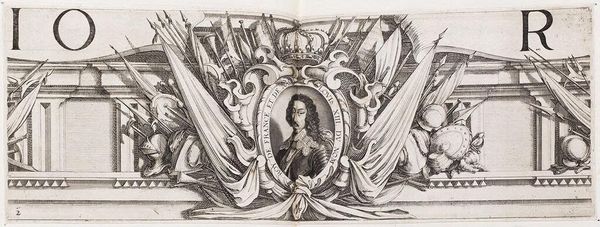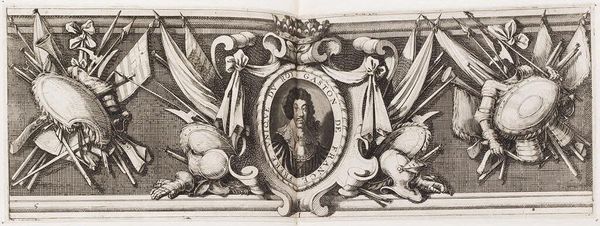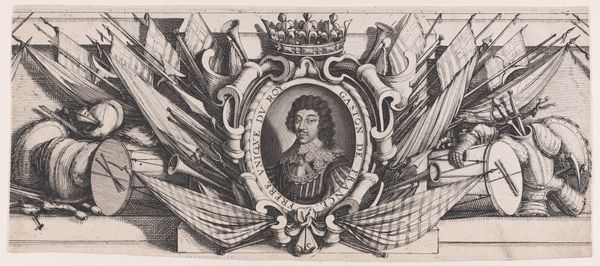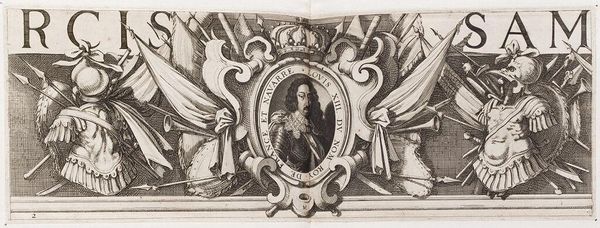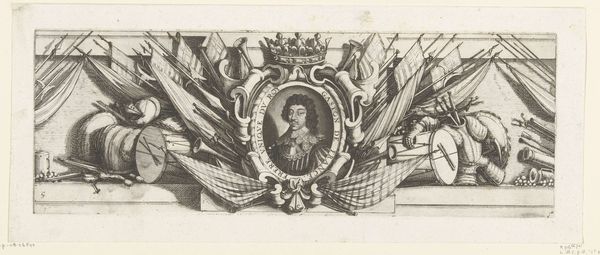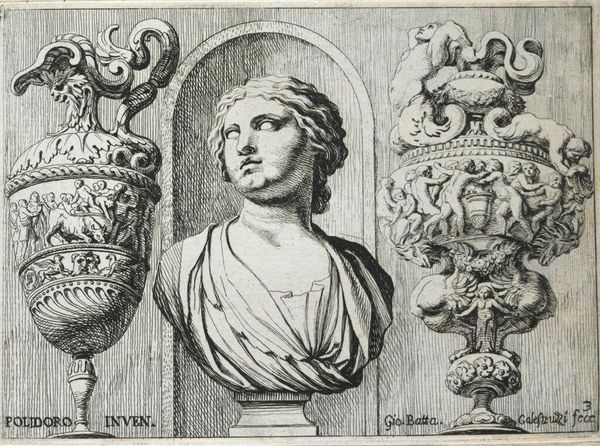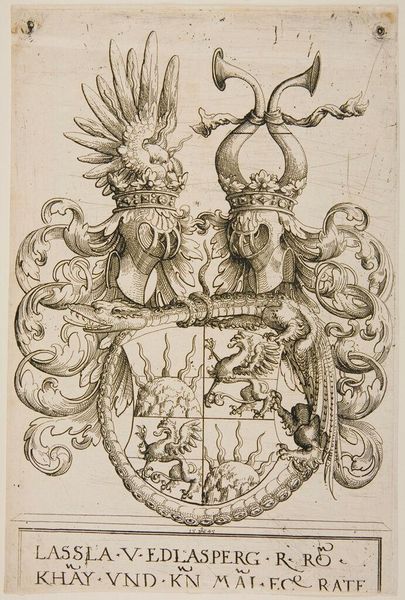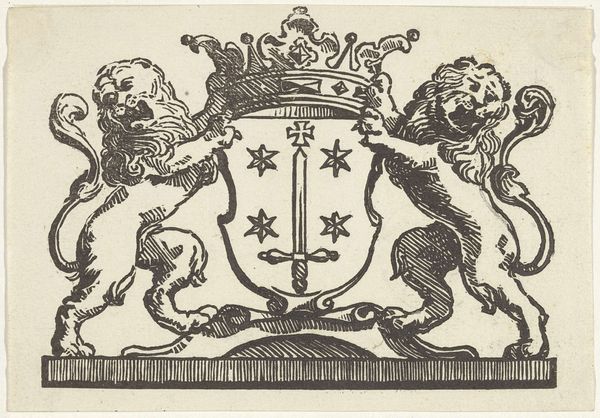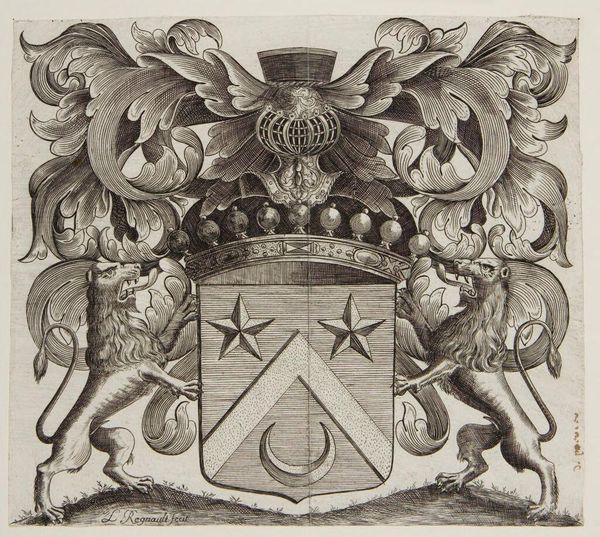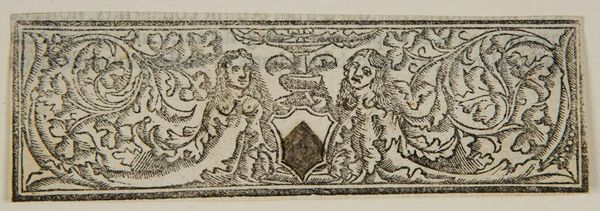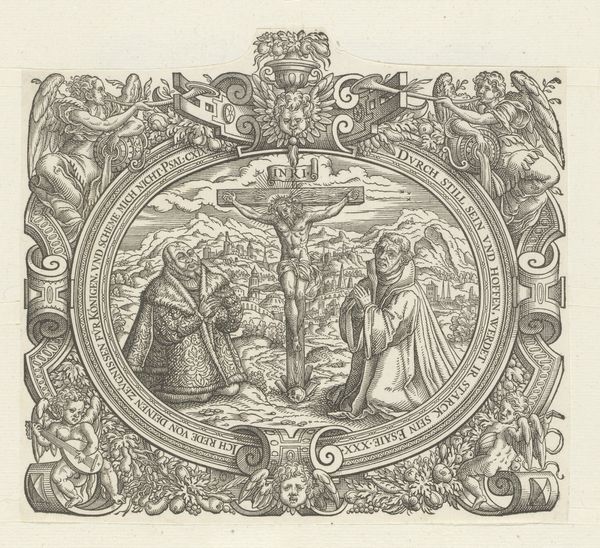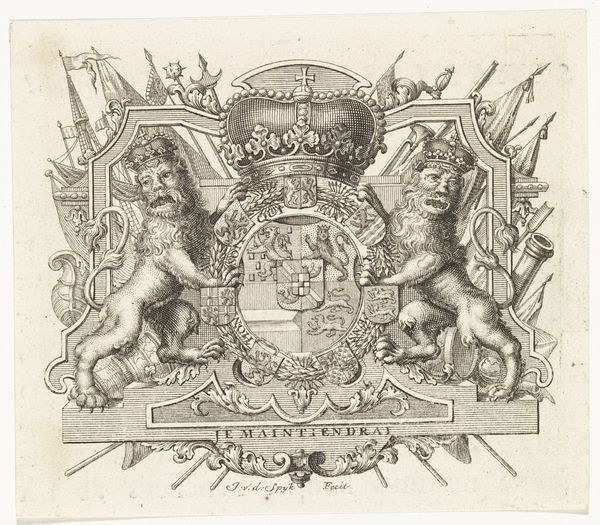
Copyright: CC0 1.0
Curator: This is Jacques Callot’s “Gaston de France (border, lower center),” currently residing at the Harvard Art Museums. Editor: My initial impression is of organized chaos; a portrait bursting from a frame amidst a jumble of military paraphernalia. Curator: Precisely. The intricate etching technique, the labor invested—it elevates a seemingly functional border into a display of skilled craftsmanship. Editor: I see it as a calculated statement, too. This border, likely for a larger work, uses Gaston’s image to project power and solidify his place within the French court. Consider the iconography of the flags and arms. Curator: These are not just symbols, though. The sheer volume and precision of the etched lines, the contrast between dark and light, reveal the extensive time and materials poured into production. Editor: True, and yet, the print's purpose is public; to disseminate Gaston’s image and, by extension, the Bourbon monarchy's authority. Curator: Ultimately, it’s about the transformation of base materials into something of value, imbued with symbolic meaning. Editor: And it’s equally about how that value is perceived and wielded within the socio-political landscape of the time. Curator: I'll keep the labor in mind when looking at the final image. Editor: And I'll consider the image's impact on shaping perceptions of power.
Comments
No comments
Be the first to comment and join the conversation on the ultimate creative platform.
